When I visited San Antonio in 2018, I knew there were two things I had to experience: the Riverwalk and The Alamo. On that trip, I really had no idea what to expect in San Antonio or from these two attractions. I enjoyed both of them so much that I wanted to see them again in more detail. When I visited The Alamo in 2018, I missed out on a guided tour so I made sure to work that in this time. I’m a big fan of guided tours!
Misión San Antonio de Valero
Guided Tour of the Alamo
The guided tour of the Alamo is $40 but the group is small and the education well worth it in my opinion. History is always a complicated subject. Such is the case with more than 250 years of history of the Alamo and the struggle for independence in Texas. In this post, I’ll hit on the highlights and the things I found most interesting and important to Misión San Antonio de Valero.
I think what surprised me the most is that what people know or think of as “the Alamo” is just the church. It is a very small portion of the mission and is set far back on the site. On the tour, we walked to some of the edges of the compound grounds. Others were pointed out to us, like the steps of the post office and courthouse.
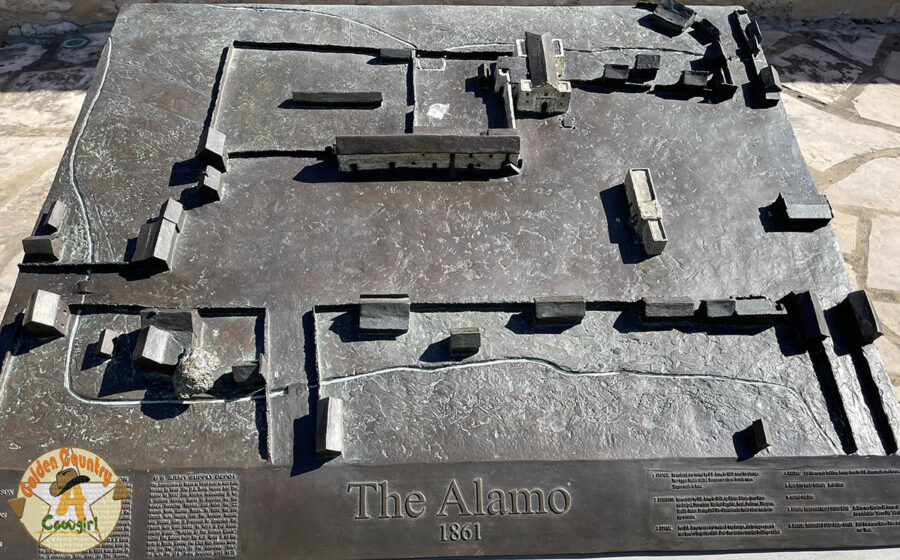 You can see in these drawings where the walls of the mission once stood and the area it covered.
You can see in these drawings where the walls of the mission once stood and the area it covered.
In the Beginning
Misión San Antonio de Valero was founded in the 18th century, around 1718, as a Roman Catholic mission. The goal of the mission friars was to convert the native people into loyal subjects of Spain. The native people were drawn to the relative safety of the mission where they had to conform to mission life, embrace Catholicism and learn a trade.
The mission complex once covered up to four acres and included the priests’ quarters, a granary, workrooms, storerooms, and Indian housing for more than 300. The mission Indians tended the 2,000 head of cattle and 1,300 sheep. They also farmed the land which produced corn, beans and cotton.
The construction on the first church didn’t begin until 1744 and continued for several years. That building collapsed around 1756. Another building was started a couple of years later but it was never completed as a chapel. This is the building you see today as the Alamo in Alamo Plaza.
Secularization of the Alamo
The Indian population at the mission fluctuated from a high of 328 to a low of 44 in 1777. Disease had reduced the Indian population at Misión San Antonio de Valero, as well as the four other missions, to the point that there were not enough to work the fields.
The new commandant general of the interior provinces, Teodoro de Croix, thought the missions were a liability and began taking steps to decrease their influence. In 1778, he ruled that all unbranded cattle belonged to the government. Raiding Apaches had stolen most of the mission horses making it difficult to round up and brand their cattle. As a result, the mission lost a great deal of its wealth.
By 1793, only 12 mission Indians remained and very few of the hunting and gathering tribes had been converted to Christianity. Due to that, the mission was secularized (privatized) and the ranch property was distributed to the civilian population. After the conversion, most locals were not interested in the buildings except to strip usable doors, windows and hardware from them. The mission was essentially abandoned for 10 years.
The Alamo as a Military Post
In 1803, the mission began being used as a military post with the unfinished church building sometimes serving as a chapel for soldiers stationed there. From 1806 to 1812 it was San Antonio’s first hospital.
Sometime in the 19th century, the mission became known as the Alamo. It’s not clear where the name Alamo, which means cottonwood in Spanish, came from. One theory is that it is named for the stand of cottonwood trees nearby. Alternatively, in 1803, the abandoned compound was occupied by the Second Flying Company of San Carlos de Parras, from Álamo de Parras in Coahuila. Locals often called them simply the “Alamo Company”.
The mission was transferred from Spanish to Mexican control when Mexico won its independence from Spain in 1821. At that time, San Antonio officials swore allegiance to the new independent nation of Mexico.
The Texas Revolution began in Gonzales in October 1835 with a disagreement over a cannon. Although the skirmish had little military significance, it marked a clear break between the colonists and the Mexican government and is considered to have been the start of the Texas Revolution.
Mexican soldiers continued to occupy the mission until December 1835, when General Martín Perfecto de Cos surrendered to Texian forces during the Texas Revolution. After five days of fighting in the Battle of Bexar, Cos agreed to withdraw to the south leaving Texas in the hands of the rebel army. With Cos’ departure, there was no longer an organized garrison of Mexican troops in Texas.
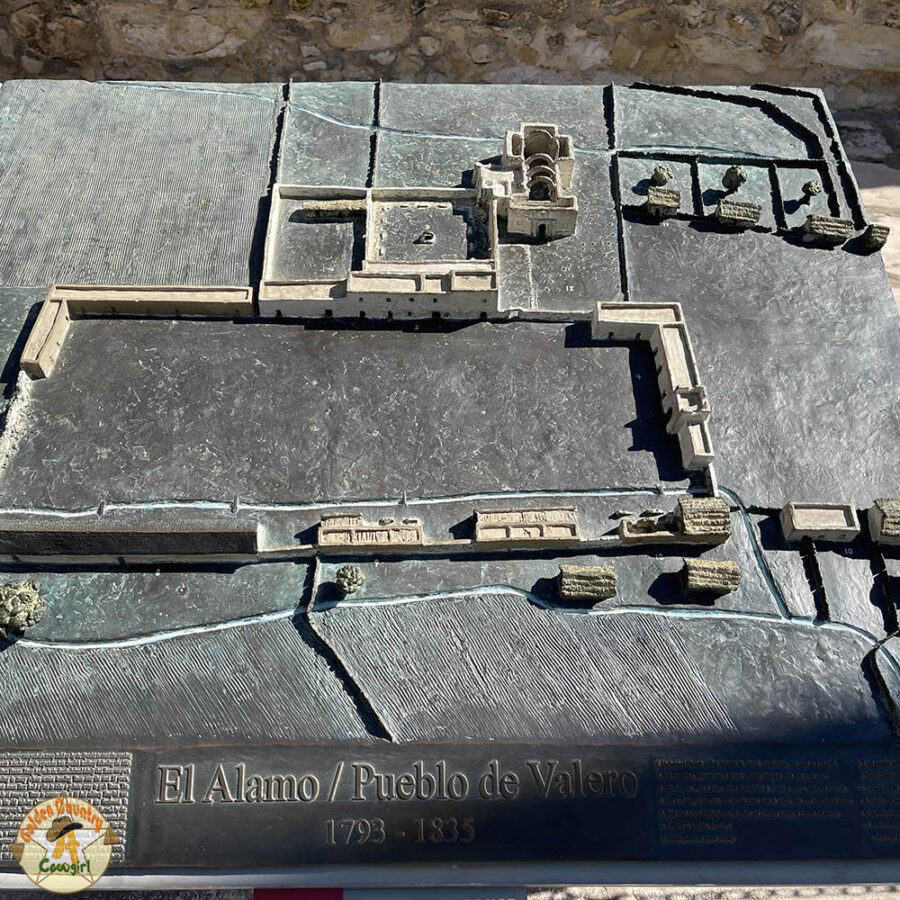 The Battle of the Alamo
The Battle of the Alamo
The Battle of the Alamo was a 13-day siege from February 23, 1836 – March 6, 1836 between 4,000 Mexican soldiers, led by General Santa Anna, and 189 Texian rebels fighting for Texas independence from Mexico.
On February 23, Mexican troops, led by President-General Antonio López de Santa Anna, arrived in San Antonio. Santa Anna was determined to avenge Mexico’s honor and retake Texas. With the arrival of Santa Anna and his troops, the Texian forces retreated into the walled Alamo compound.
When the siege began, General Santa Anna declared that the Mexican Army would take no prisoners. The rebel Texans knew that they had no hope of winning the siege and that death awaited all of them.
The first engagement occurred on the 25th when Santa Anna’s forces tried to take over some outbuildings. The Alamo defenders burned those buildings.
On the sixth day of the siege, Santa Anna’s troops began an extensive artillery attack. By the next day, Mexican troops completely surrounded the Alamo.
In the photo on the right, the divot at the bottom was created by a Mexican musket ball.
The defenders of the Alamo had been sending out requests for help. The only help they received, due to weather and other factors, was 32 men from nearby Gonzalez. A few days later, Santa Anna received 1100 reinforcements.
On March 2nd, in the middle of the battle, the Texas Declaration of Independence was signed and the Republic of Texas was declared. However, the men fighting the Battle of the Alamo were unaware of these events.
Santa Anna’s artillery attack continued and intensified. Then the shelling stopped. The Alamo defenses had been weakened so much that Santa Anna made a decision to attack the garrison.
Before dawn on the morning of March 6th, the final attack began with the Mexican army overrunning the walls. As the Mexican Army overran the walls, most of the Texians fell back to the convent and the chapel. The bloody hand-to-hand combat battle took only 90 minutes. When it was over, all the defenders of the Alamo were dead. Only women, children and a slave were spared. Santa Anna ordered all the bodies be piled up and burned. The ashes remained for a year until they were buried in unknown locations.
Aftermath of the Battle of the Alamo
After the Battle of the Alamo, about 1,000 Mexican soldiers stayed on at the Alamo. A few months later, in May, the Mexican army was defeated at the Battle of San Jacinto and Santa Anna was captured. The Mexican army agreed to leave Texas, essentially ending the Texas Revolution.
When the garrison of Mexican soldiers left the Alamo, they spiked the cannons, tore down some of the walls and set many fires. Only a few buildings survived and the chapel was left in ruins.
In September, the Constitution of the Republic of Texas was approved. Sam Houston was elected president of the Republic.
In 1837, the ashes of the defenders of the Alamo were buried. The mission and fortress was then abandoned and stood as a symbol of the courage of the men who fought the bloody battle.
Why Did Texas Want Independence from Mexico?
Cultural Ties to the US
After Mexico became a nation in 1821, they encouraged American colonists who were given land that Mexicans had not already claimed. The settlers became Mexican citizens and were supposed to learn Spanish and convert to Catholicism. However, they never really became Mexican. They kept their language and culture, which tied them more to the US than Mexico.
Slavery
Most of the American settlers were from Southern states where slavery was still legal. Slavery was illegal in Mexico so the settlers made the slaves sign agreements making them indentured servants – slavery by a different name. Mexico didn’t like that but they went along with it. By the 1830s, the settlers feared they would lose their enslaved workers which made them favor independence.
Ending Immigration from the US
Americans were eager to come to Texas for land. The Mexican government tried to get Mexicans and other Europeans to move to Texas but none wanted to. On April 6, 1830, in an attempt to slow the flow of immigrants to Texas from the US, the Mexican government passed a law prohibiting settlement in Texas by immigrants from the US. The native born Texas Mexicans were few in number and by 1834, outnumbered by Americans by four to one.
States Rights vs Federal Control
About the time the first settlers arrived in Texas, Mexico wrote its first constitution which was heavily weighted towards states rights. Texans were pretty much free to govern themselves as they saw fit. When this constitution was overturned in favor of one that gave the federal government more control, the Texans were outraged.
Chaos in the Government
Chaos in the Mexican government in Mexico City made it impossible for Texans to solve their differences in any meaningful way. New governments often reversed decisions made by previous administrations.
Economic Ties to the US
Many of the Texas settlers produced export crops. Texas was separated from Mexico by vast deserts with few roads. Selling their goods in Mexican ports was almost impossible. It was much easier to send their goods downstream to ship to nearby ports like New Orleans. These economic ties to the US hastened their departure from Mexico.
After the Battle of the Alamo
Shortly after Texas became the 28th US state on December 29, 1845, US troops moved into the Alamo, using it as a quartermasters and commissary depot. They repaired and renovated the buildings and put the first roof on the chapel.
In 1861, Texas seceded from the United States to join the Confederate States in the Civil War. The Confederate Army took over the Alamo when the US troops left. At the end of the war in 1865, US troops resumed use of the Alamo.
The Next 140 Years
Beginning in 1871, parts of the mission property began to be sold off. Around 1876, the Church sold the convent and it became a mercantile. The Catholic church retained control of the chapel which it finally sold to the State of Texas in 1883. The city of San Antonio tried to make it a tourist attraction but tourists were very disappointed due to its condition.
The road to restoration was long and convoluted until, finally, the Daughters of the Republic of Texas (DRT) was formed in 1892 with a main goal of preserving the Alamo. Even this development was tumultuous with disagreements on how the restoration should be handled and accusations of mismanagement. In 1905, the convent and Alamo church were given to the care and custody of the DRT.
The DRT continued to manage the Alamo until 2010 when the Texas Attorney General received a complaint that the DRT was not only mismanaging the Alamo property but also the funds allocated for its maintenance. In 2011, a law was passed transferring the custodianship of the Alamo to the Texas General Land Office (GLO). The DRT objected to the transfer at first but eventually agreed to work with the GLO to preserve the Alamo for generations to come.
The Alamo Today
The Alamo welcomes 2.5 million visitors annually, making it one of the most popular attractions in San Antonio. In addition to being an important historical site, it is also a shrine to those who died at the Battle of the Alamo.
It is almost impossible to comprehend how the city of San Antonio has grown up around the Alamo without a visit to the observation deck at the Tower of the Americas. If it weren’t for the cenotaph poking its head above the trees, I’m not sure you could find it.
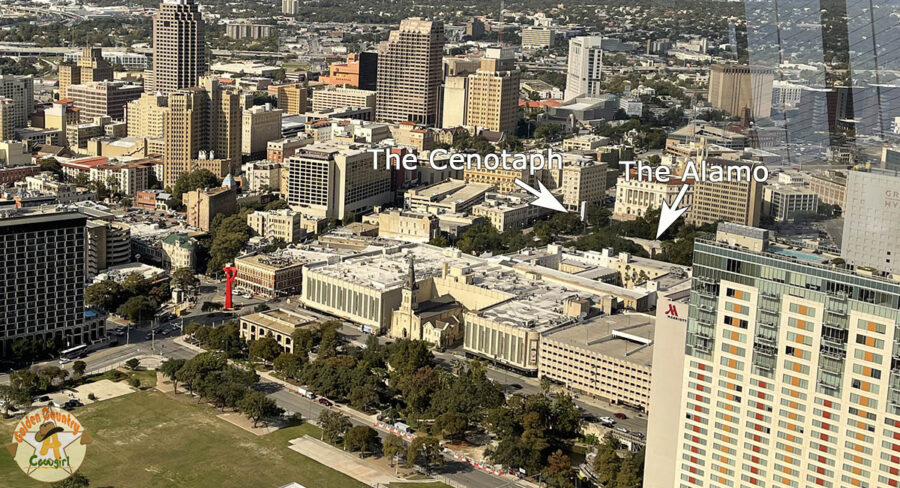 The Cenotaph
The Cenotaph
A cenotaph is a monument to someone buried elsewhere. The term comes from Greek and means empty tomb. The Alamo Cenotaph, also known as The Spirit of Sacrifice, is a monument to the defenders of the Alamo and was erected in 1936 during the Texas Centennial celebration. The monument incorporates images of the Alamo garrison leaders and 187 names of known Alamo defenders.
The Details
Location
The Alamo
300 Alamo Plaza
San Antonio, TX 78205
The Tours
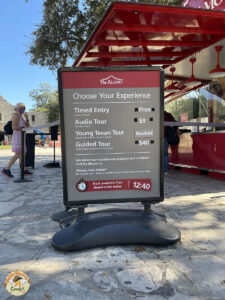 Alamo Church Free Timed Entry
Alamo Church Free Timed Entry
Entrance to the Alamo Church is free but you must have a pre-reserved, timed ticket. This is to regulate and cut down on crowds. Only 100 people max are allowed inside at one time and you have 30 minutes to explore. After your 30 minutes, you can explore the rest of the grounds as long as you like.
Victory or Death Audio Tour
You can upgrade your free church tour with the 45-minute long Victory or Death Audio Tour. The audio tour includes entry into the Alamo Exhibit.
Alamo Guided Tour
The hour long guided tour takes you through the original footprint of the mission. Our guide was extremely knowledgeable, articulate and entertaining. He really brought the history and characters of the Alamo to life. The guided tour includes entry into the chapel and the Alamo Exhibit.
The website says these tours need to be purchased online but that didn’t seem to be the case when I was there in November. However, the tours do tend to fill up so an advance reservation would ensure that you have a spot at your desired time.
My Final Thoughts on the Alamo
You might be asking yourself if I learned all of this on my guided tour. The answer is yes, and then some. The tour was amazing. Of course, I did have to do some research when I started writing this post to get all the dates and details straight. Like I said in the beginning, history is a complicated subject! The Alamo is a great place to learn about Texas history and put it into some perspective.
Additional Reading:
- Causes of Texas Independence
- Alamo History Chronology
- Alamo Church
- The Alamo: The Building
- The Alamo Timeline
- Travis Writes from the Alamo: “Victory or Death”
Until next time…






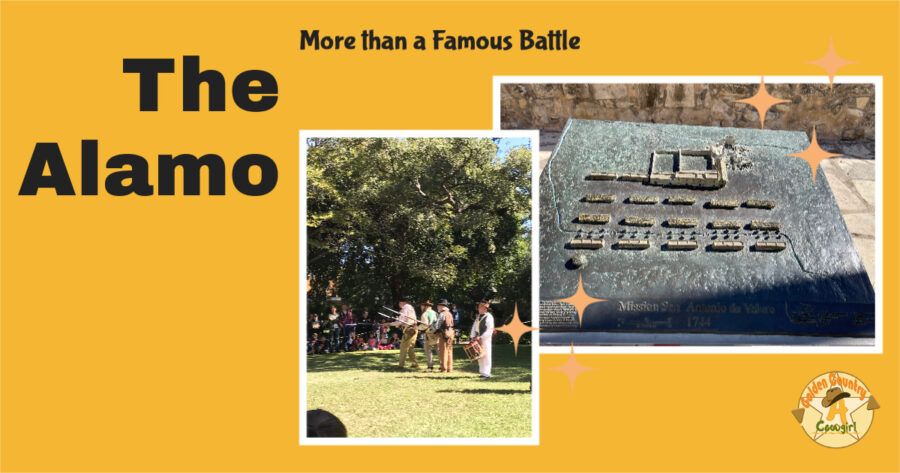
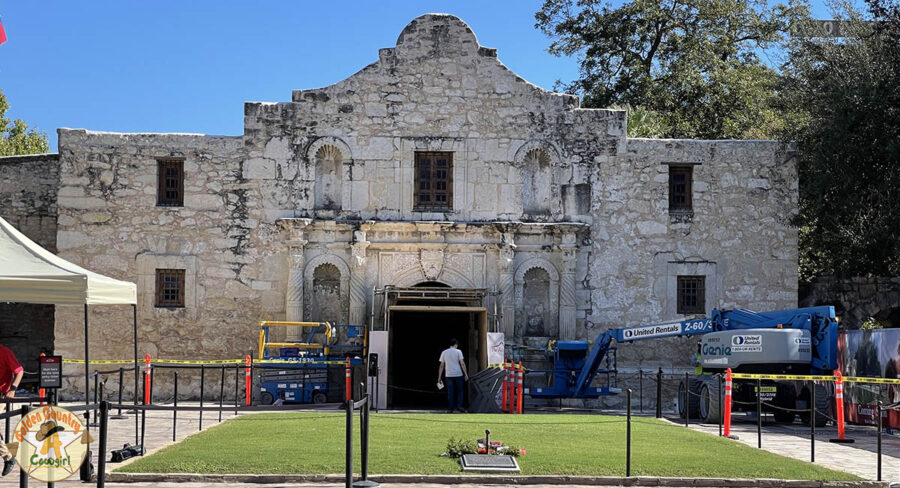


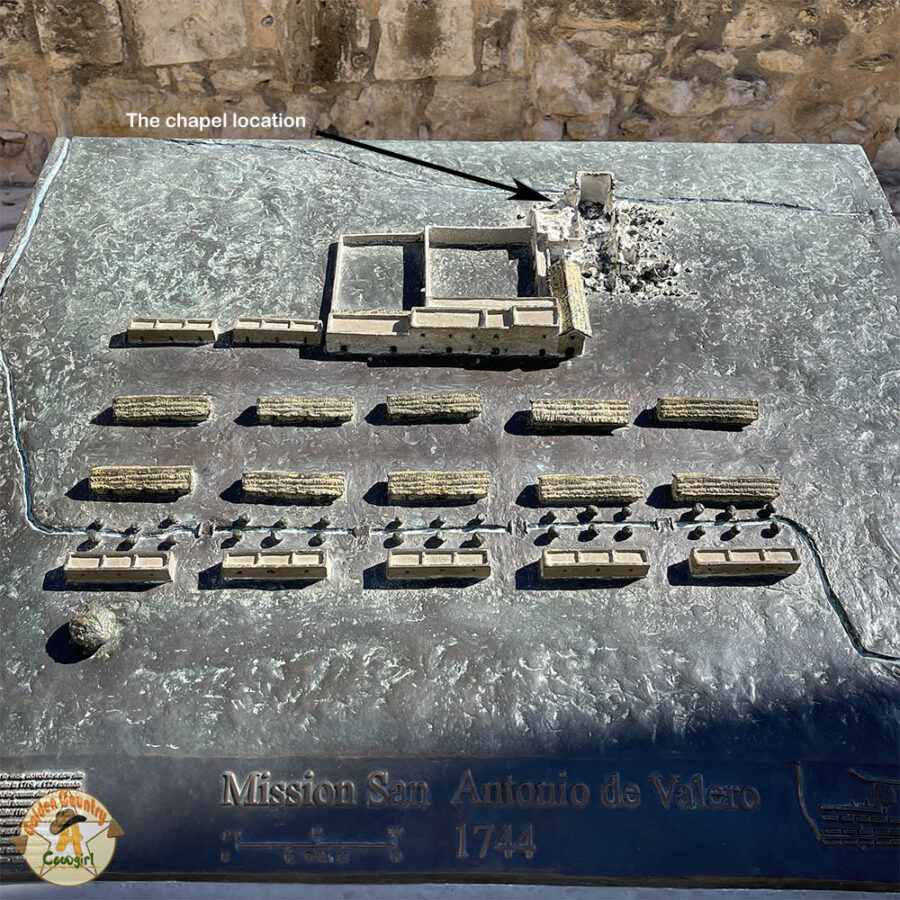
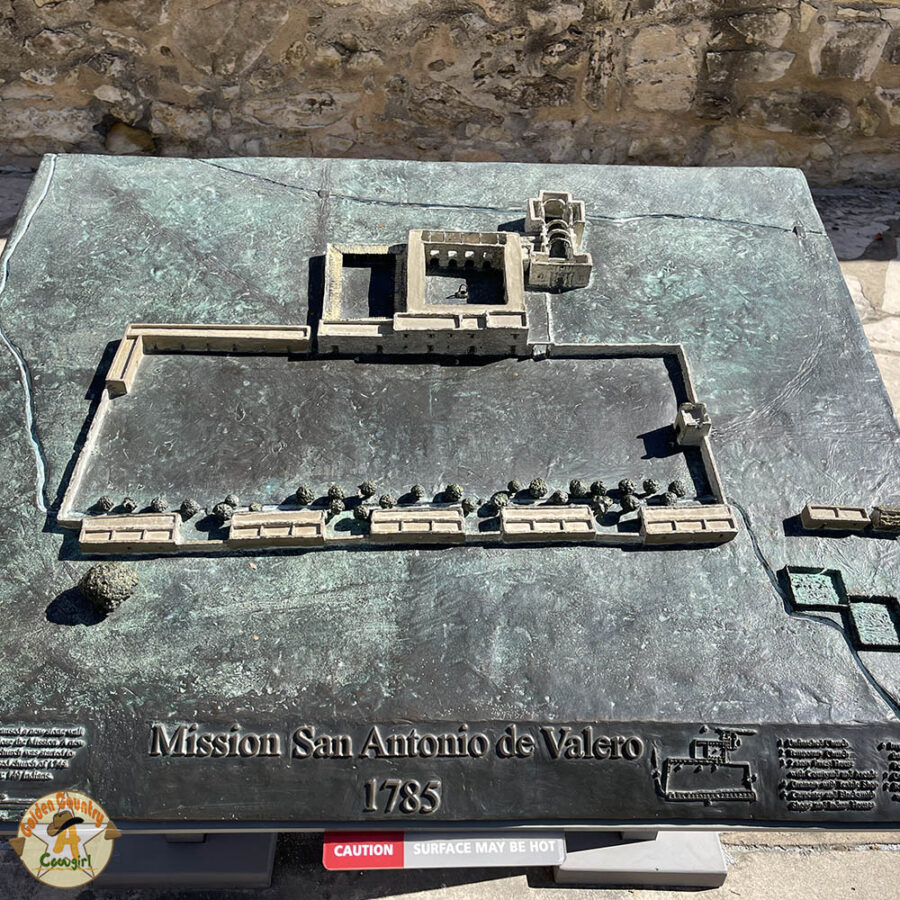
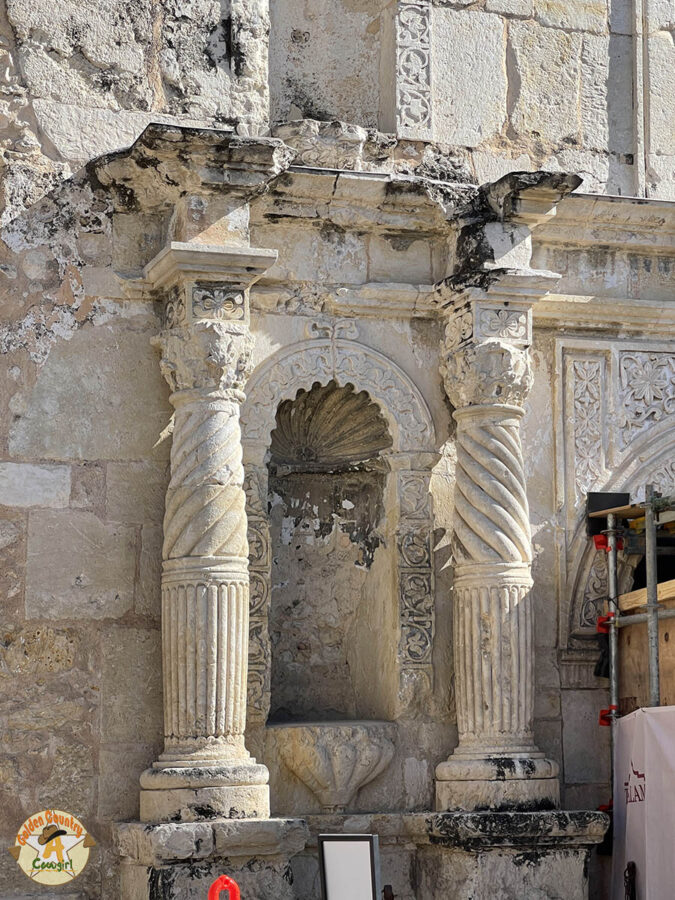
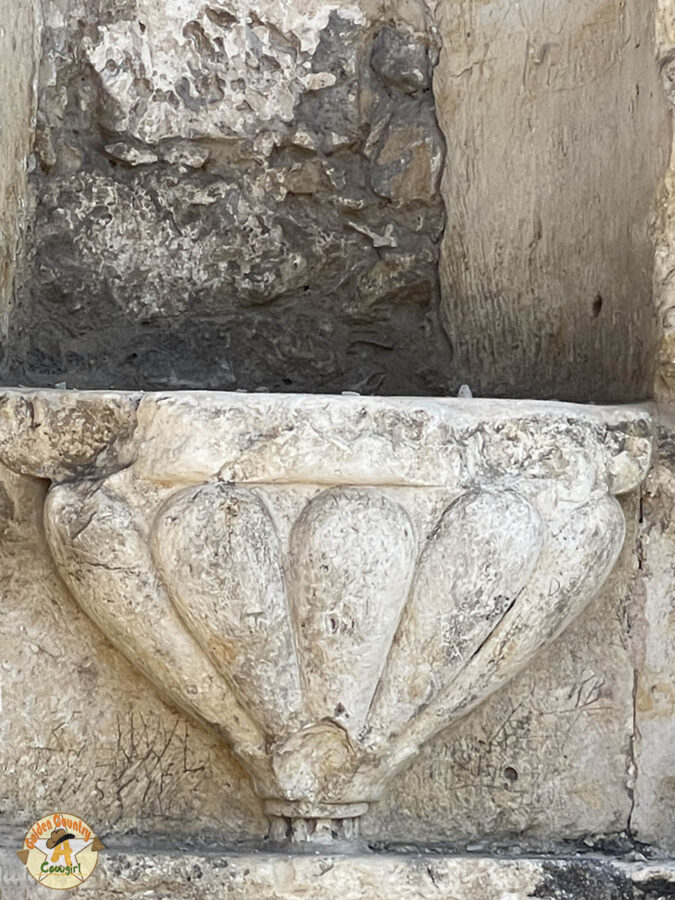


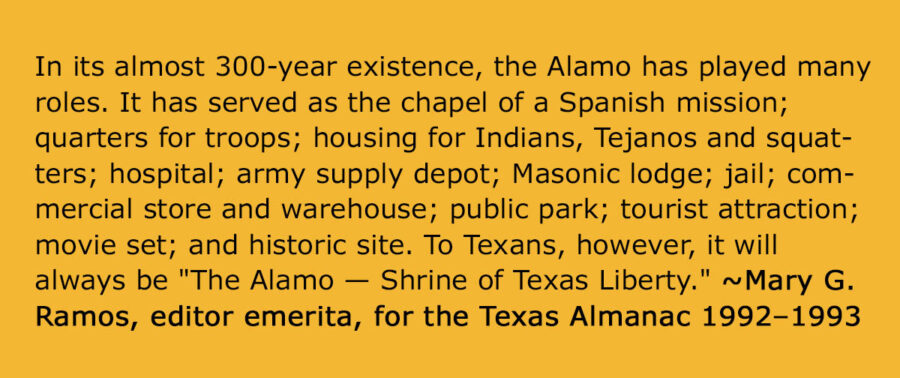
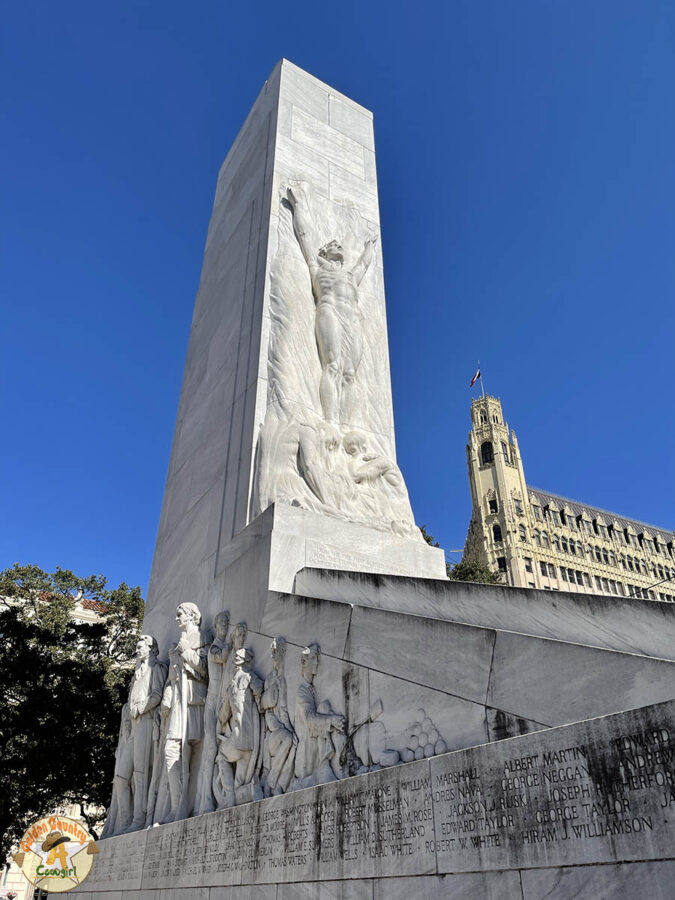
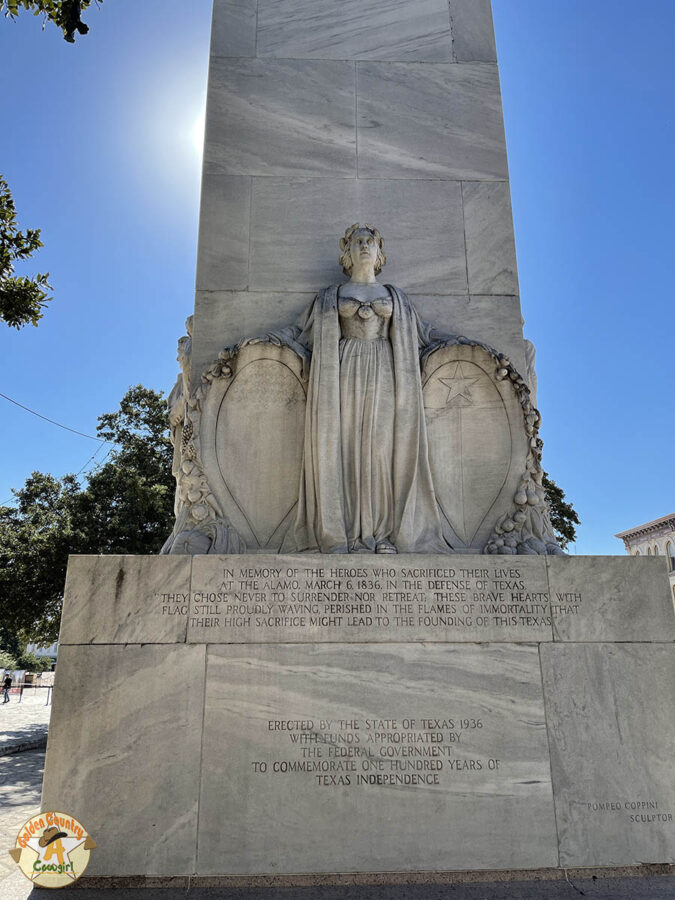
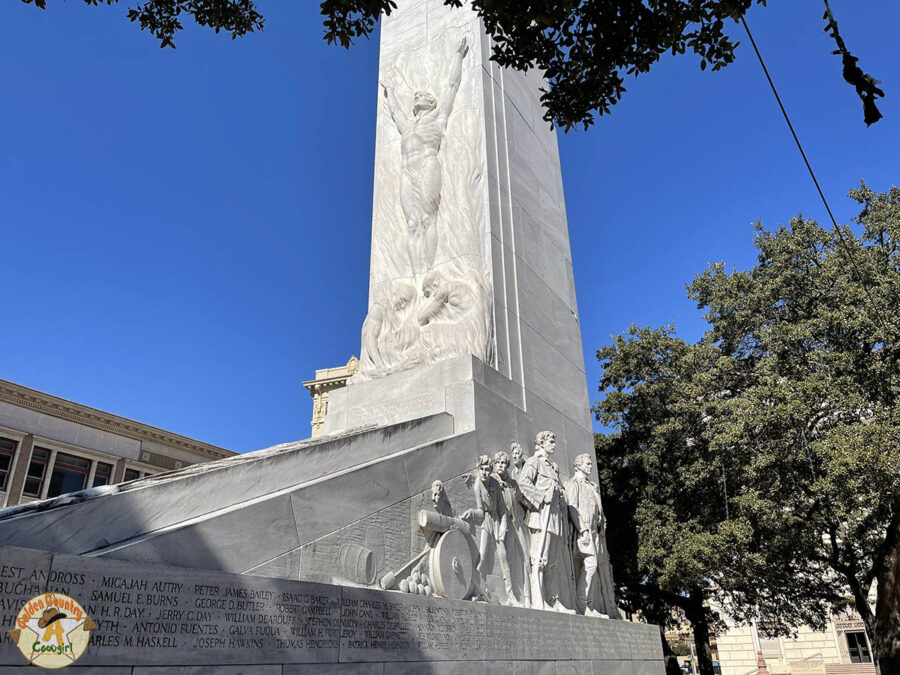
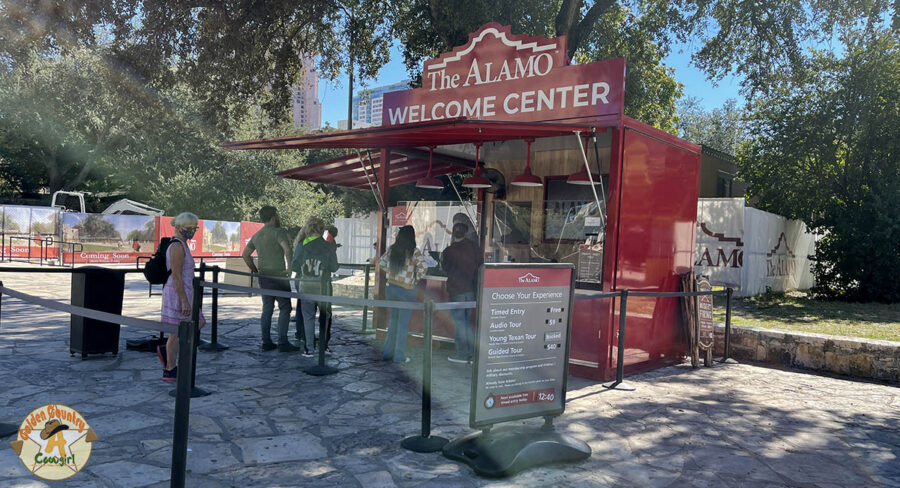



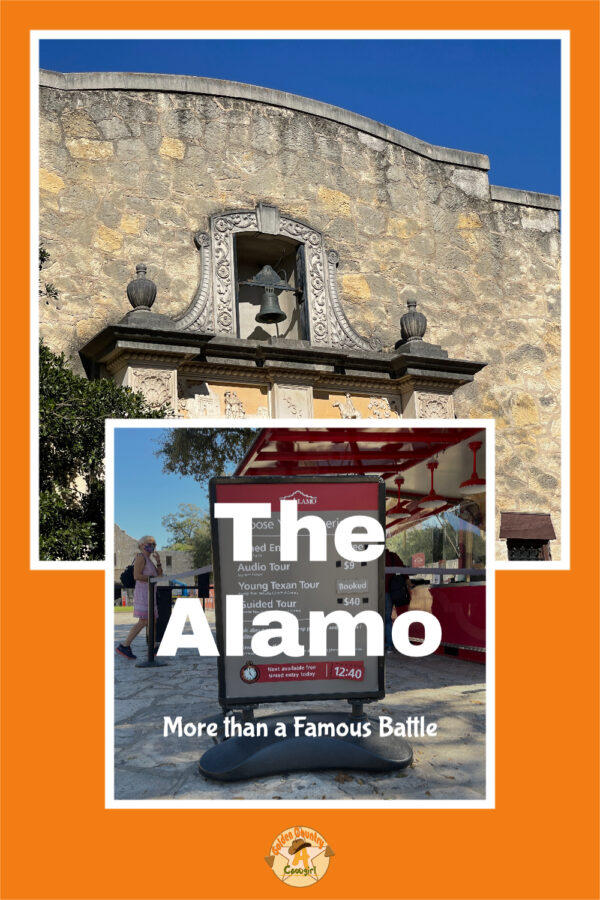
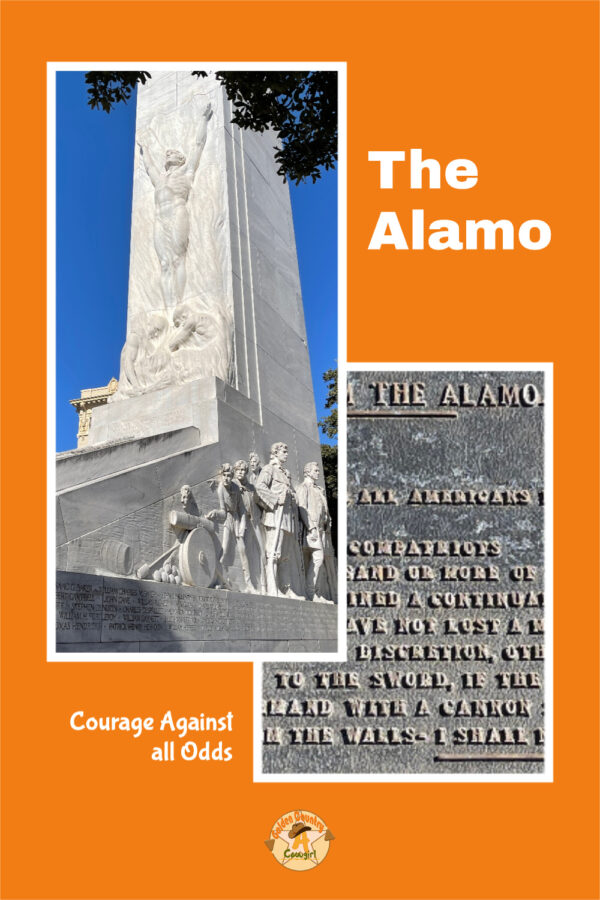


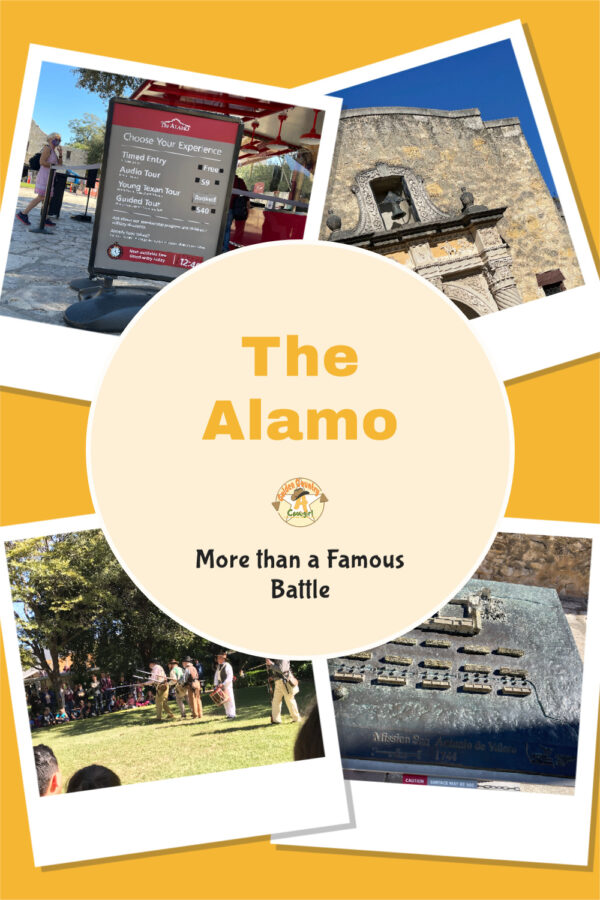


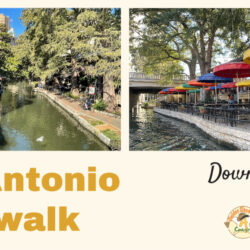
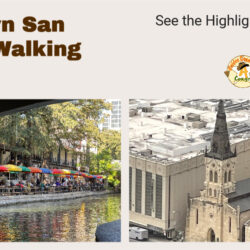

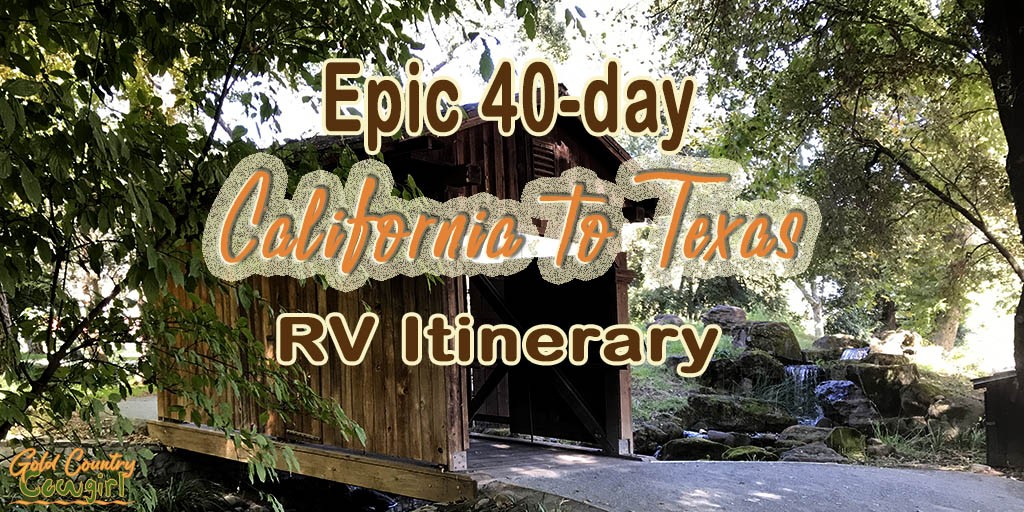
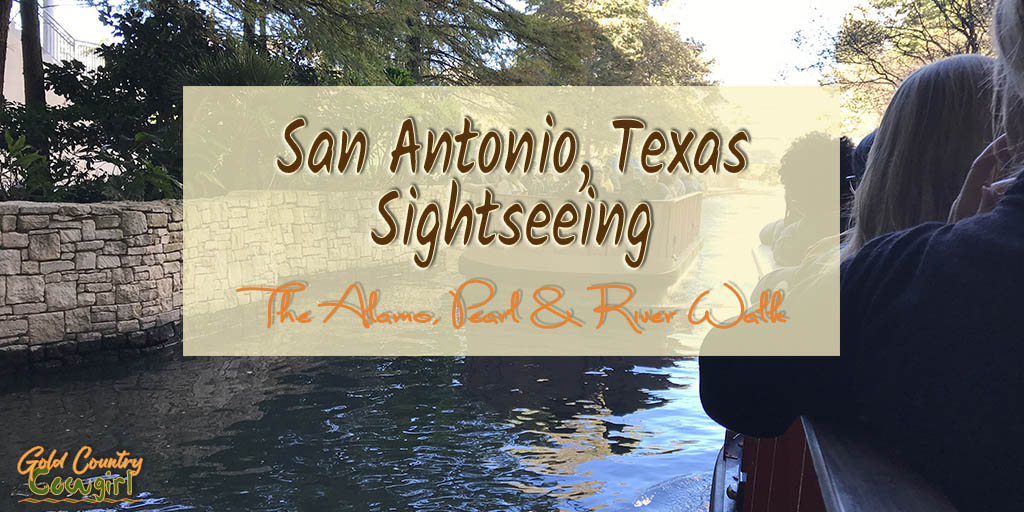
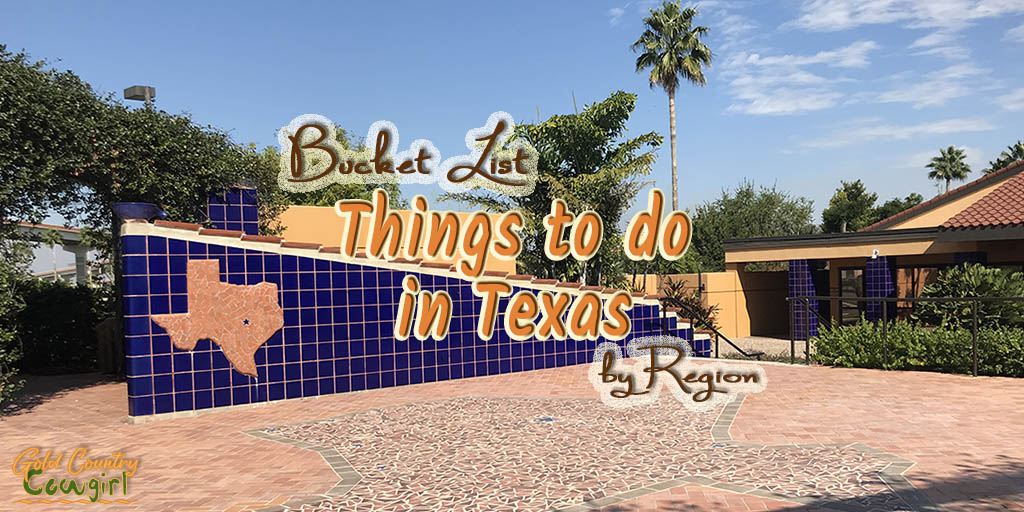














I don’t know how I came across Golden Country Cowgirl, but I am so happy I did! I currently live between Rome and London, and I’ve been dreaming of visiting the USA forever.
California would be first on my list, but I’d love explore all the South of the United States… Thank you so much for teaching me about the Alamo – I knew nothing about it, if not the name!
It’s been a very long time since I visited London but it is still one of my favorite places in the world. Maybe I’ll make it back some day. California would be an awesome choice for a visit but the South also has much to offer. A difficult choice. One I hope you get to make some day.
Wow, I didn’t know about the history! it seems very interesting and getting an audio tour is just perfect way to visit!
An audio tour or a personal guided tour are definitely the best ways to learn about the Alamo.
I love visiting historical places and I’m sure I’d love this one. I have seen so many movies about this place – your tour looks so interesting!
I love visiting historical places too. The movies are quite controversial these days as some folks don’t like the way the circumstances are presented.
What a great history that you offered. I loved visiting the Alamo and surrounding missions.
Thanks for stopping by and the compliment. I’ve visited all but one of the missions. It is still on my list for another trip.
Pingback: Buckhorn Saloon and Museums - Not What I was Expecting! | Golden Country Cowgirl